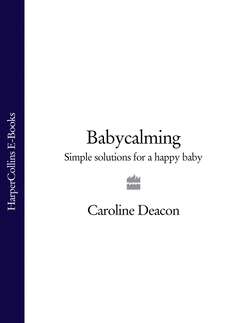Читать книгу Babycalming: Simple Solutions for a Happy Baby - Caroline Deacon - Страница 15
Оглавление7 How Much and How Often?
~ Times change – does the advice stay the same? ~
Breastmilk is poured forth from an exuberant overflowing Urn, by a bountiful hand, that never provides sparingly. Thus Nature, if she be not interrupted, will do the whole business perfectly well.
Long ago, babies were carried around all the time and fed whenever they seemed hungry. This century, lots of feeding regimes have come and gone, so now many mothers feel completely confused about what babies want or need. Add to this conflicting advice from mothers, grandmothers, aunts and possibly even midwives, GPs and health visitors, and it’s no wonder women feel a bit lost as to what’s best.
For instance, a generation ago mothers were told to feed babies for 20 minutes only, every four hours. Although we now know that this led to a downturn in breastfeeding rates, many books still try to suggest new time limits, new regimes for breastfeeding.
The advice is always well meant; the ‘expert’ hopes to make life for a new mother easier by imposing routines on baby from day one. For some mothers and babies, this will work, but for others feeding won’t work like this, the baby will be unhappy, he may not gain weight, and breastfeeding will eventually fail.
One of the reasons that bottle-feeding can seem attractive is that mothers know exactly what they are giving their babies and when. Breastfeeding can seem a bit of an inexact science in comparison. With bottle-feeding, it is perfectly possible to schedule feeds from birth.
Bottle-feeding
If you have decided to bottle-feed your baby, you will find the question of how much and how often relatively easy, as it is all printed on the side of the tin. You and your baby may be happy to feed according to a schedule – so many ounces at certain times of the day; however, some babies will not like feeding like this, and so it’s OK to bottle-feed on demand – just like breastfeeding. You need to have some way of keeping a record of exactly how much your baby takes at each feed, so that you can ensure he is getting all he needs in any 24 hour period.
Rather than continue to feed your baby when he has had the amount recommended, you will probably have to comfort him in other ways. Bottle-fed babies are usually quite happy to take a dummy, as the sucking technique is the same. Have a look at the chapter called Your Baby’s Need to Suckle for more about the pros and cons of using dummies. The section on Step Two (pages 65–111) also has lots of suggestions about calming and comforting your baby without feeding him.
Breastfeeding
Breastfeeding is really very different from bottle-feeding in the first few weeks, and it is best to put all ideas about schedules out of your head for that time. Be assured that your baby will develop a feeding pattern and that it will become easier to establish a routine; the problems occur when you try to establish a clock-governed routine in the first six weeks.
WHY DOES EARLY SCHEDULE-FEEDING FAIL FOR SOME BABIES?
Trying to Go Too Long Between Feeds
The first suggestion you might hear is to try to ‘space feeds out’ – the idea being that you can store up milk and also get your baby to be really hungry so he will take more at a feed.
Unfortunately, breasts are not like taps; milk is not just produced when the baby feeds. Breastmilk is being made all the time, and stored between feeds in the breast. How much is made depends on how full the breast is. If the baby does not feed very often, then the breasts will fill and milk production will decrease.
Recent research has also found that women vary enormously in their storage capacity; with one woman able to store 300 per cent more than another woman, for instance, and this capacity has nothing to do with breast size. All women are capable of producing the same amount of milk over 24 hours, but women who have larger storage capacities can go longer between feeds and still give their babies enough to eat, while others will need to feed more often to deliver the same amount of milk to their babies.1
Women with larger storage capacities might well be able to schedule feed – but, ironically, the chances are that their babies will go for longer between feeds anyway! Problems happen for those with smaller capacity, where stretching feeds will ultimately result in less milk being produced in 24 hours.
During pregnancy, lots of milk-making cells are created inside the breast – more than your baby is likely to need. In the early weeks after birth, some of those milk-making cells will be switched on, the rest switched off according to how frequently your baby feeds. While this is happening, your milk supply is kept high by the hormone prolactin
